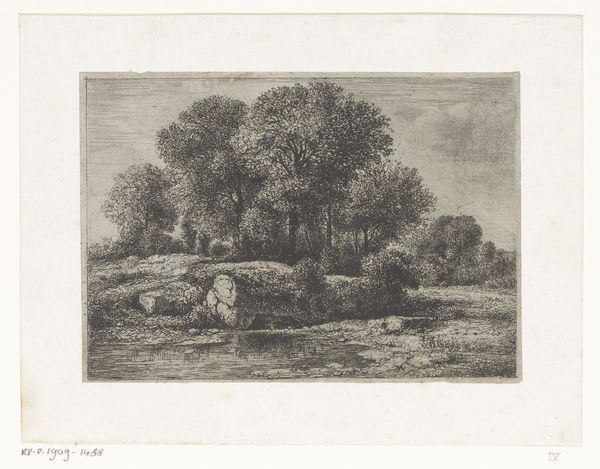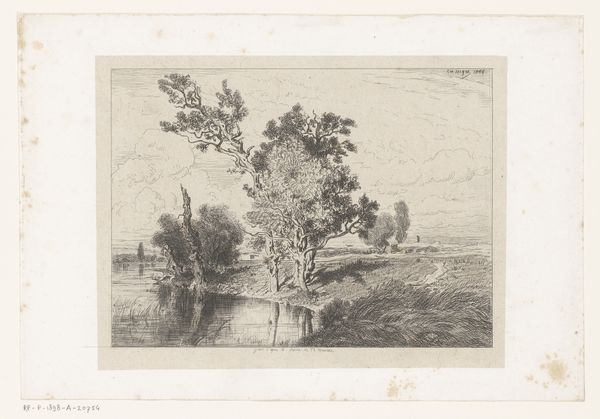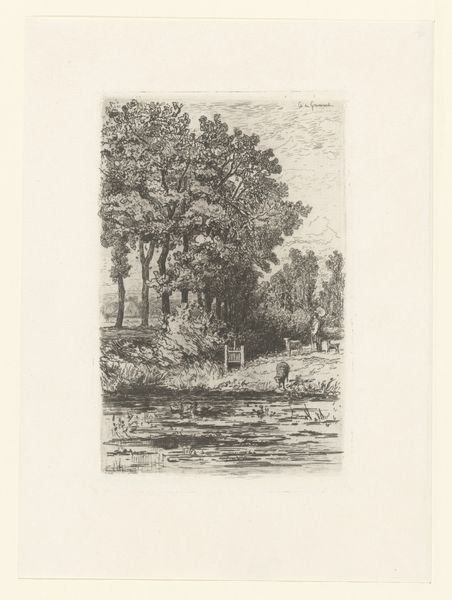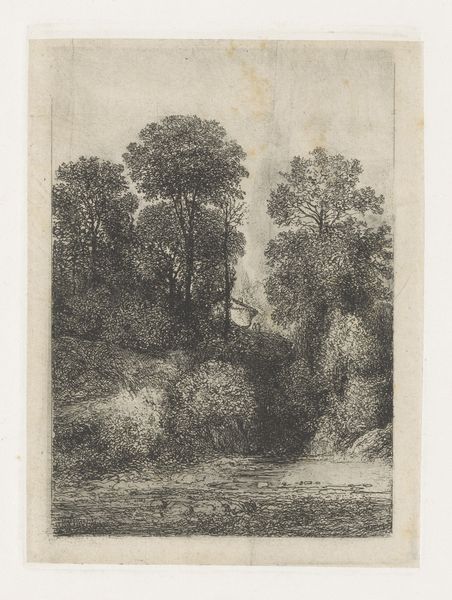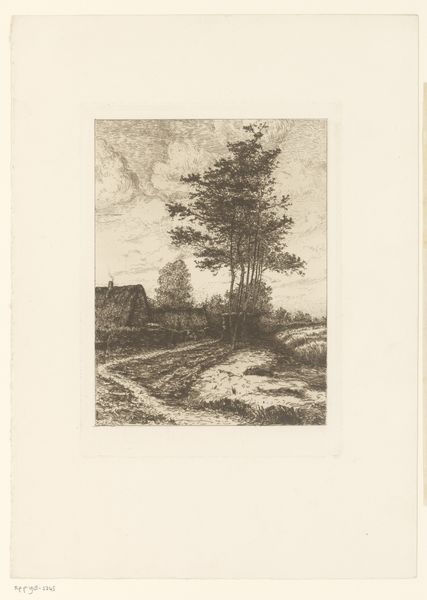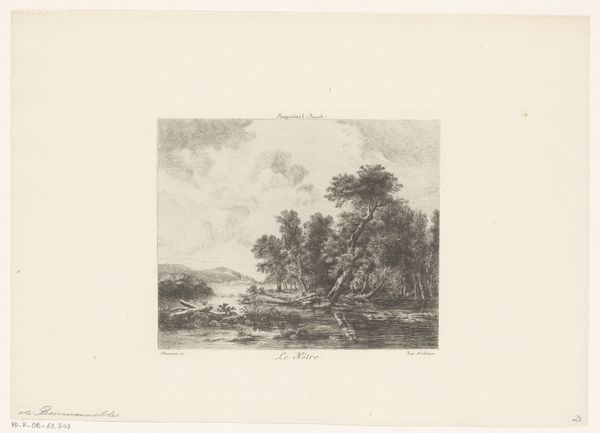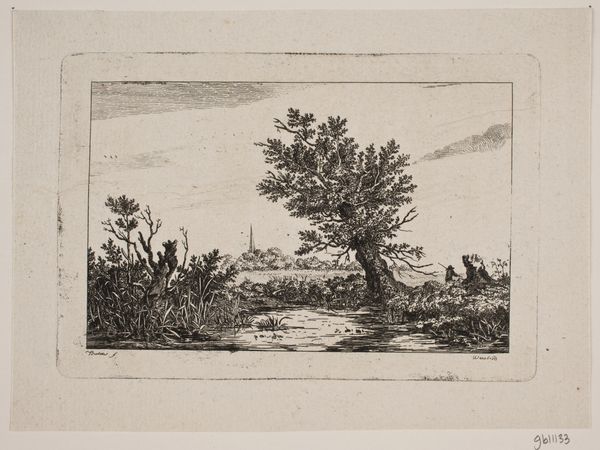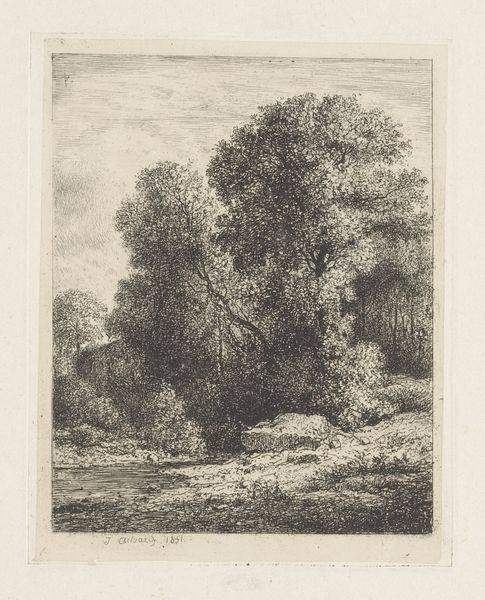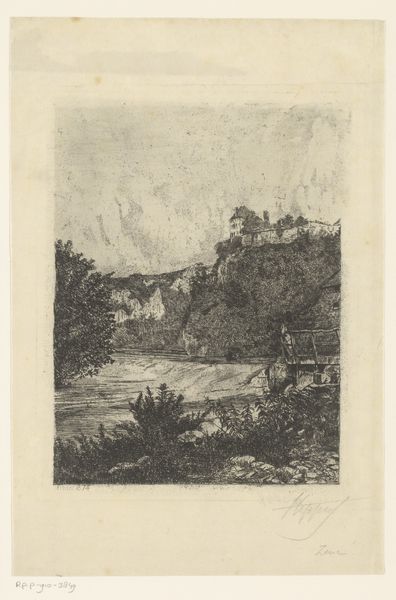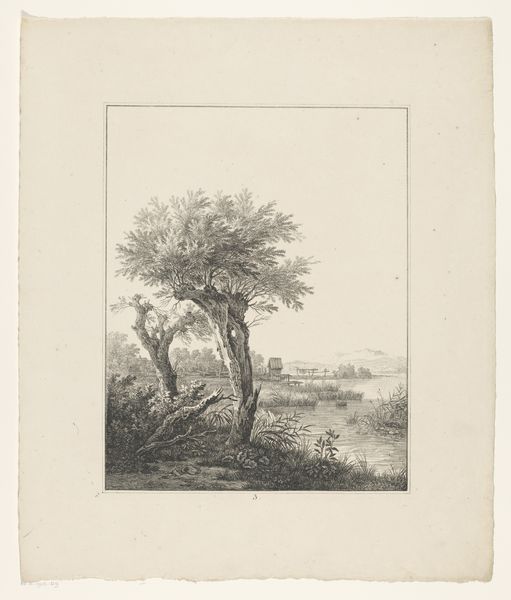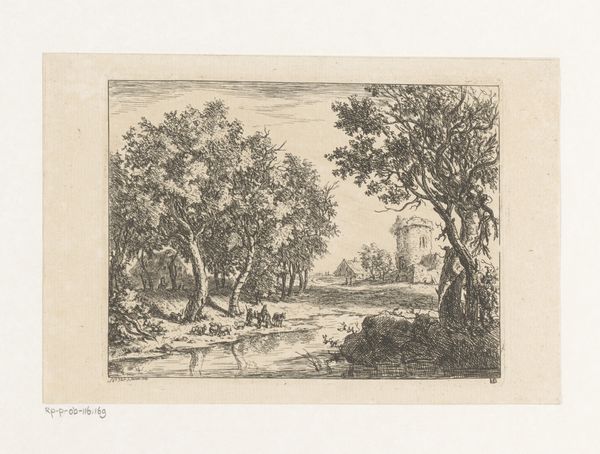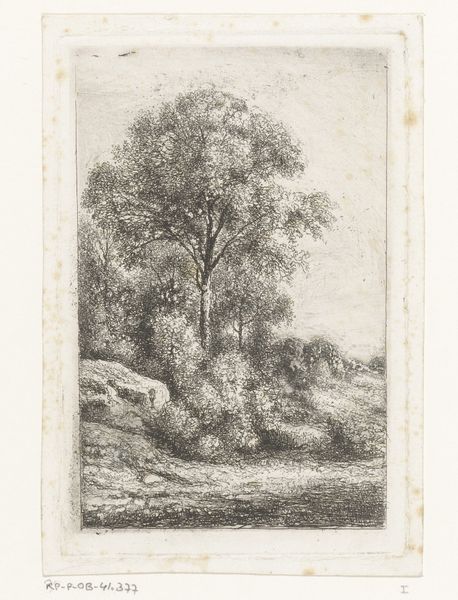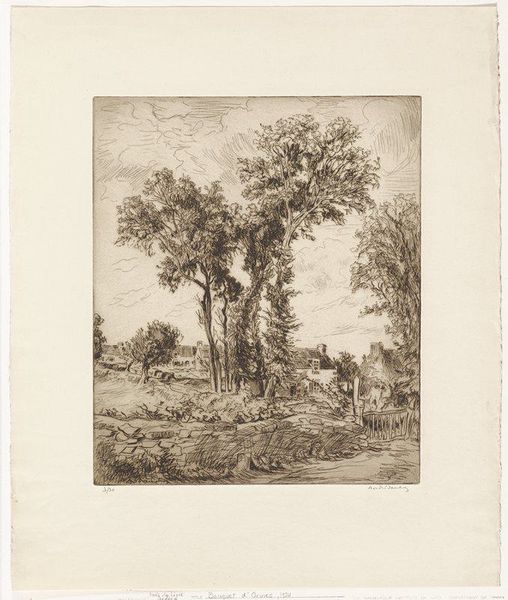
Berglandschap met bomen aan een rivier 1868 - 1912
0:00
0:00
drawing, print, etching, paper
#
drawing
# print
#
etching
#
landscape
#
paper
#
realism
Dimensions: height 328 mm, width 258 mm
Copyright: Rijks Museum: Open Domain
Curator: Here we have "Berglandschap met bomen aan een rivier," or "Mountainous Landscape with Trees by a River," an etching on paper dating from 1868 to 1912, created by Maria van Hohenzollern-Sigmaringen, Countess of Flanders. Editor: It feels melancholy. The somber palette and hazy execution, almost indistinct in places, really pull me in. I get the feeling that nature is both immense and fragile. Curator: Indeed. The Countess was associated with Realism. As the imagery suggests, such landscape works gained popularity along with emerging environmental awareness and the burgeoning tourist industry across Europe during her lifetime. This etching provided Maria a creative outlet amidst royal expectations. Editor: The cluster of reeds in the foreground seems so central to the composition, demanding more focus than you might expect at first glance. To me, that emphasis symbolizes a natural cycle, the resilience and renewal found even in unassuming plants, like a microcosm of life. Curator: I'd say that reading resonates, especially within the framework of the socio-political sphere in which she lived. A woman of royalty capturing what's generally dismissed serves as silent commentary of value and meaning. The piece asks us to examine that relationship, don't you agree? Editor: Precisely. These images also provided an interesting method for those in privileged positions to represent both power and the subjugation of such authority through natural scenes. One has to wonder if that reading rings true within the circles in which Countess Maria spent her days. Curator: Interesting. This close look has definitely enriched my understanding of Countess Maria's engagement with art. It reminds us to reflect on how people reconcile expectations with their true expression, particularly women throughout art history. Editor: And it proves how even seemingly straightforward landscape scenes hold layer upon layer of meaning for those of us inclined to look closely at these recurring symbols!
Comments
No comments
Be the first to comment and join the conversation on the ultimate creative platform.
